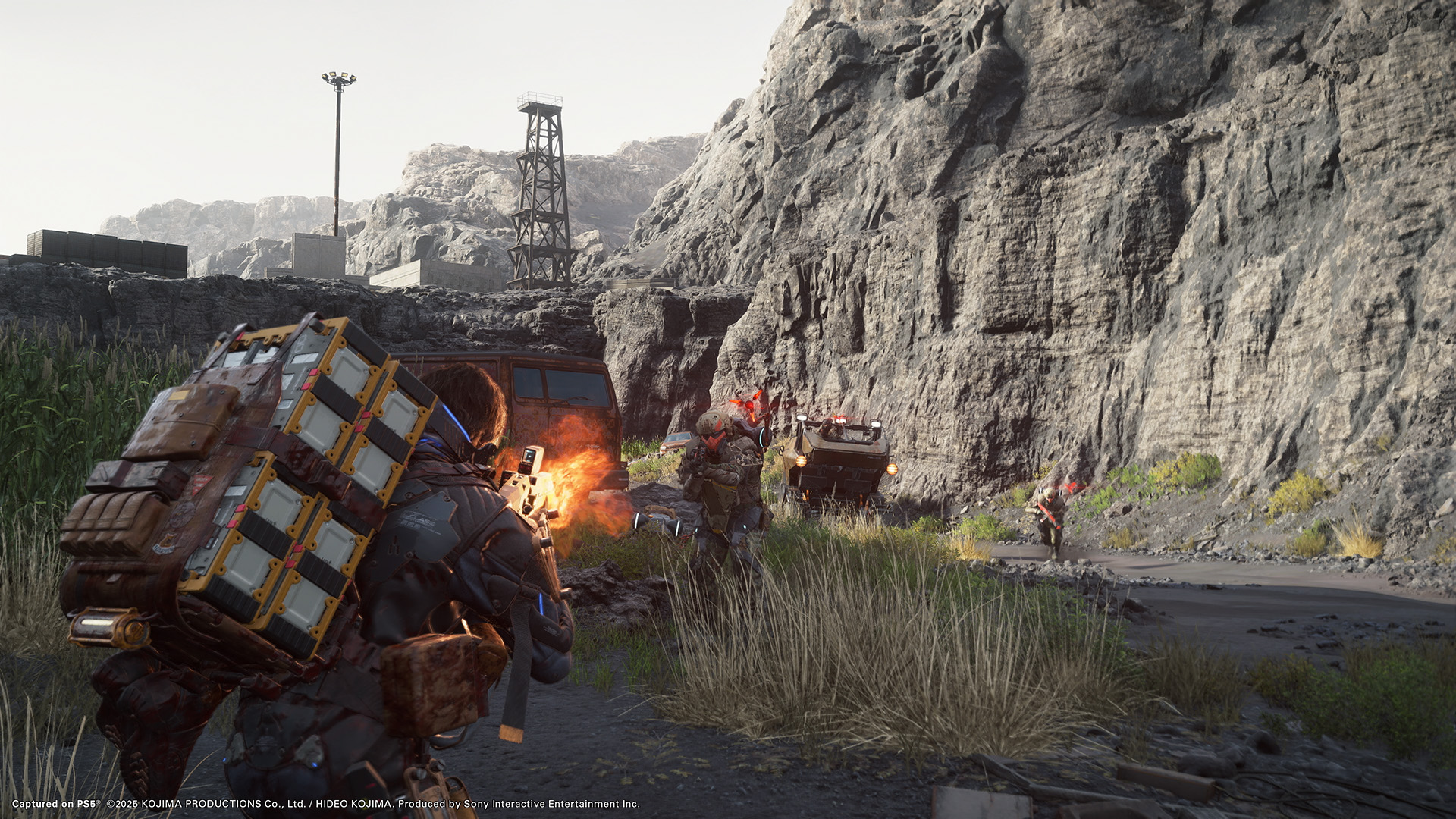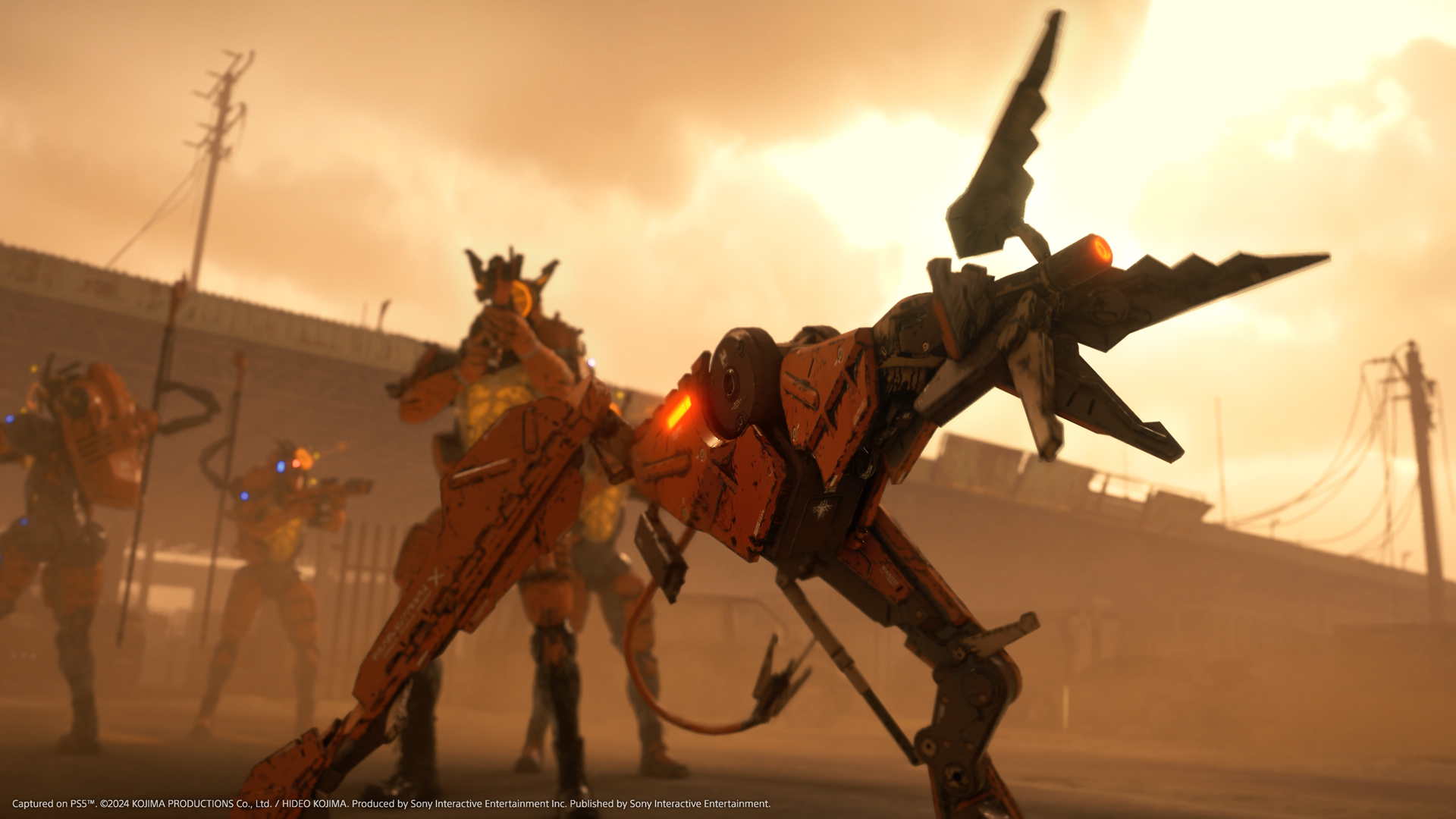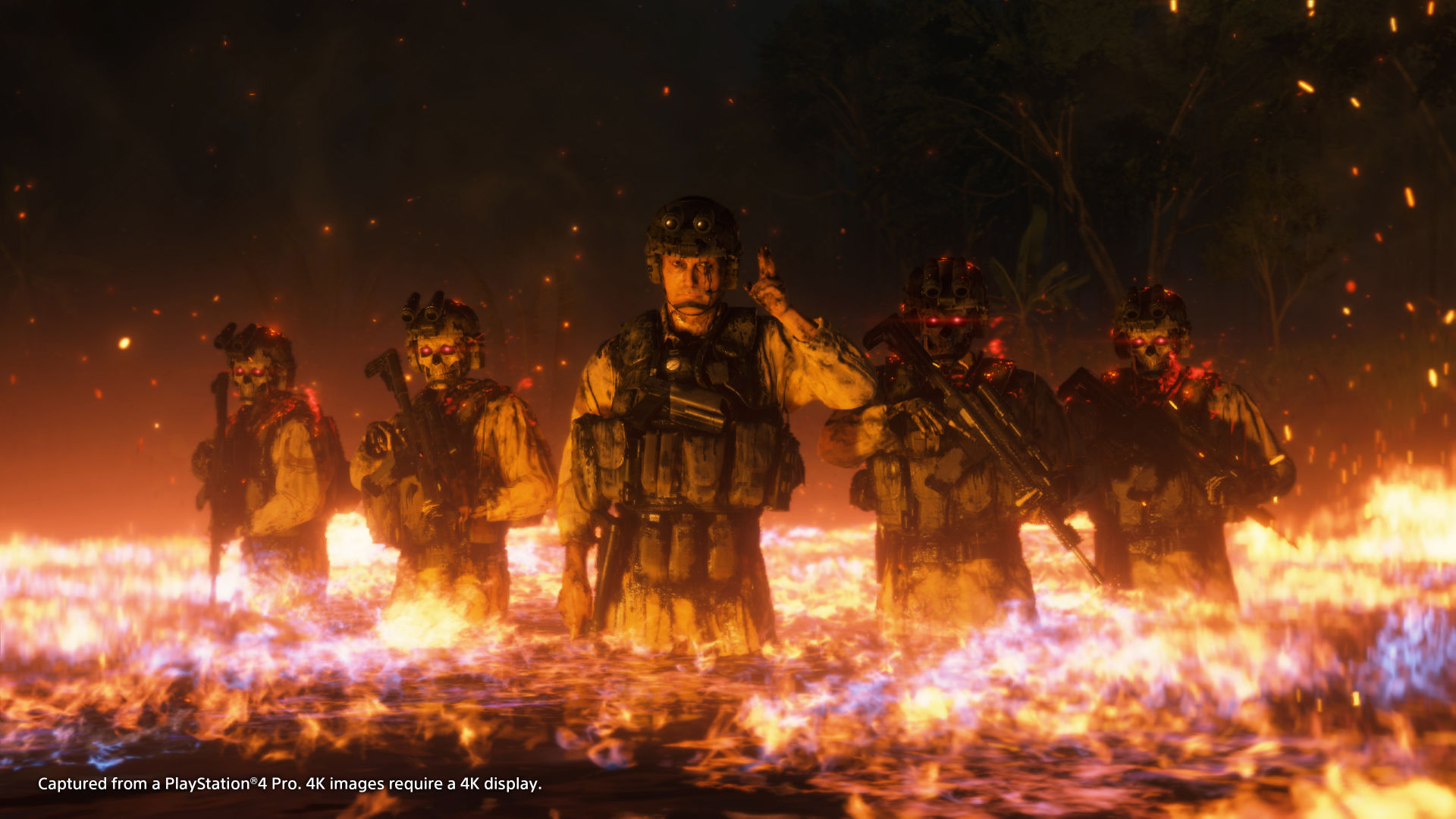Death Stranding 2: Too Many Solutions. Not Enough Problems
Snake approaches the camp of armed soldiers unseen. With his tranquilliser sniper rifle, he takes out three of them before approaching another with a stun gun. He’s spotted. Enemies approach but are taken out by landmines Snake had planted earlier. He throws a smoke bomb and expertly takes down two of them with his bare hands. An assault rifle unclips from his belt, and he opens fire. There are too many of them. He places a turret installation and runs for cover, sending grenades into the camp as the turret finishes them off. A decoy grenade distracts the remaining forces enough for Snake to retrieve his truck, mow them down with the attached machine gun, before jumping out and setting the camp aflame with a quadruple rocket launcher. Everything falls quiet. The enemy has been destroyed. Snake has completed his mission. He takes what he needs and falls back to pick up his…What? A backpack? Full of parcels no less!

That’s because he isn’t Snake at all. This is Sam Porter Bridges, and the game is Death Stranding 2: On The Beach. But I thought this was a game about delivering parcels? There were plenty of opportunities for combat in the first game (one of my favourites), but Sam was almost always underprepared and severely outgunned. He was given weak non-lethal weaponry and defensive gear to protect his valuable and fragile cargo. As you progressed through the game, enemy encampments became larger and more dangerous. Many were in the path of important pathways, forcing Sam to make hard choices on how to proceed. Here, in Death Stranding 2, I had just wiped out a large camp full of enemies with a small arsenal of weaponry. They didn’t stand a chance against the countless avenues of destruction I had covered, and I was only around a third of the way through the game.

Later on, Sam encounters more dangerous non-human enemies, but by then, he is even more equipped to deal with the new threats that very rarely plague his path. It is a problem with the entire game, one that is never solved, even in its impressively scaled boss fights. This bleeds through into the delivery aspect of the game as well, with the game throwing seemingly endless tools at the player to solve any situation they may face. Nothing is challenging anymore. The painful toe-bleeding grind of pushing through unstable ground or scaling the isolated mountains of the first game is gone. Those things are there, no doubt, but Sam is better equipped and twice as strong as he effortlessly wades through thick snow and over uncertain ground. He is unstoppable, bringing down colossal enemies that the Snakes of Metal Gear Solid could only dream of. The world of Death Stranding 2 is many times larger than the first, but almost nothing ever stands in your way. There is no accomplishment. No satisfaction. No relief.

It is no secret that the first game’s awkward and restrictive combat ruffled a few feathers, with many branding it as a big step down from Kojima’s previous games. It was deemed a quirky “walking simulator” that was a slog to get through, and especially frustrating during its Mads Mikkelsen-starring forced combat sequences. Sam often felt defenceless, barely able to keep his footing, let alone take on camps of armed bandits. Many made it clear that they wanted a more capable Sam from the sequel. They wanted more weapons, tools, and abilities. It would perhaps even make perfect narrative sense for Sam to be much more capable now after the trials of the first game, and Kojima Productions was more than happy to make those changes.

But it is hard to ignore that they may have overshot, smudging the one hook that kept us Death Stranding fans going, the death-defying, brutal push to deliver that one last package. The desperate escape from the game’s supernatural pursuers while carrying a baby in a pod attached to Sam’s chest. Death Stranding 2 tells a wild ride of a story with no shortage of surprisingly effective emotional depth and redemptive glory, but its weak link ends up being the gameplay, which the game itself seems oddly disinterested in. The sweeping changes may appeal to many, but when the credits finally rolled, I have to say I had no desire to keep on keeping on.